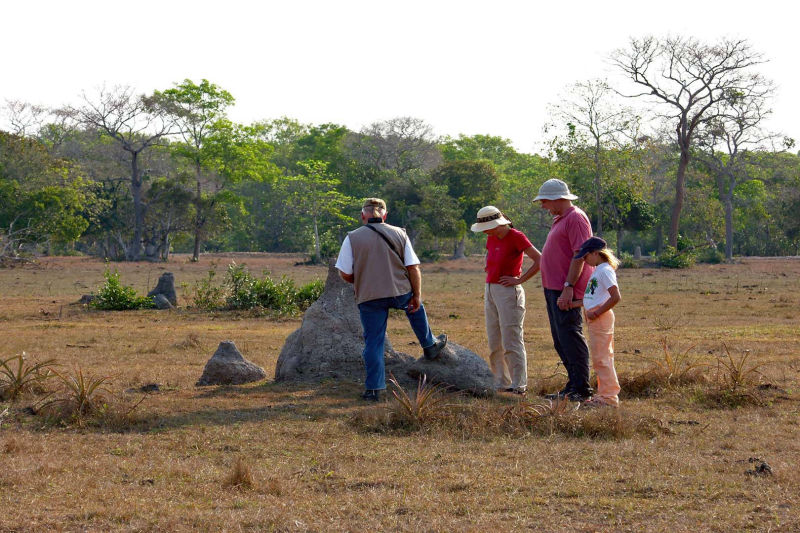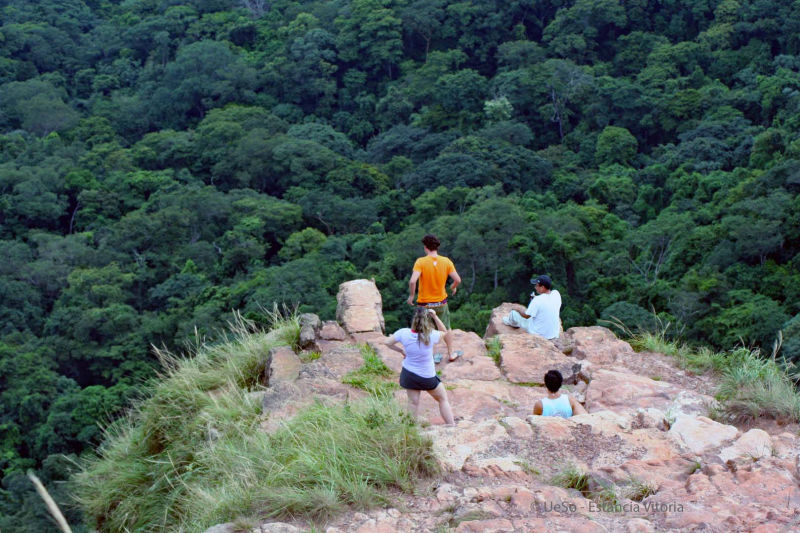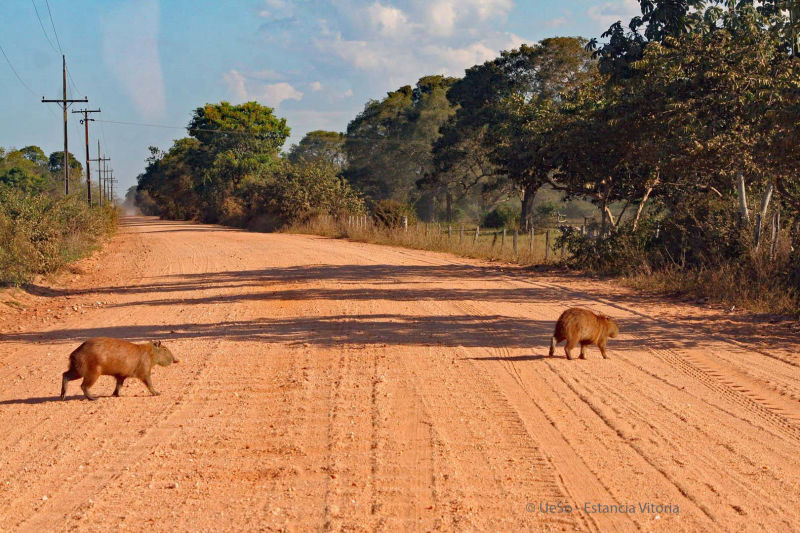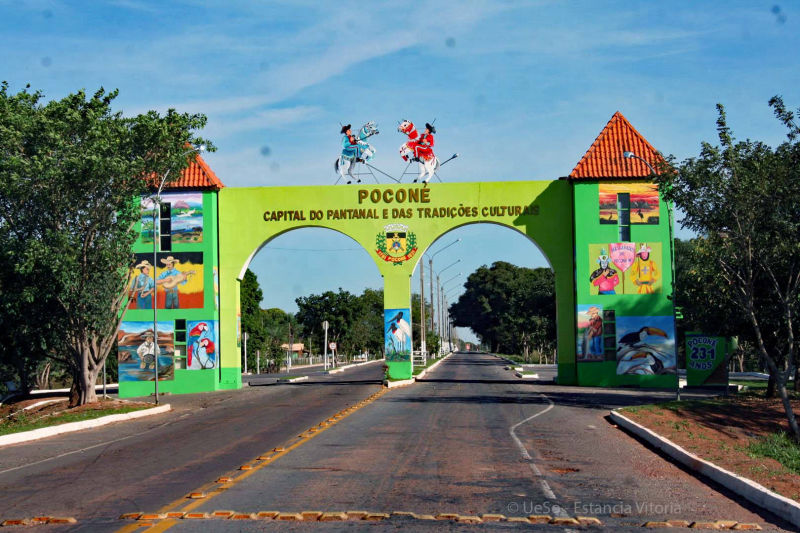The wetland is bordered by the Table Mountain to the east and ranges to the foothills of the Andes to the west. This flooded area almost covers the area of Germany or 6 times of Switzerland,
230'000 sq km, and is an important natural water reservoir for fauna and flora and people.
In the flood basin, which fills irregularly from the middle of November, the water levels differ every year.
If we look at the map, the watershed is at Diamantino in the north of Cuiabá. In the north, the water flows into the Amazon. Towards the south to Argentina via the Pantanal into the Rio Paraguay.
The Pantanal starts a few minutes drive from the former gold-digger town of Poconé. Leaving Poconé and shortly afterwards you reach the dusty mud road: the Transpantaneira. The construction of this road began in the 1970s. They wanted to connect the northern, poorer economic regions with the southern trading metropolises in Paraguay and Argentina. The World Bank had co-financed most of the road, but unfortunately, due to corruption and the difficult construction conditions, the works were sanded up in the «damp underground».
That is why the Transpantaneira now connects Poconé to all farms in the Pantanal and already ends in Porto Jofre, 145 km further down in the south.
 Termites create land areas
Termites create land areas The Chapada Plateau in the North
The Chapada Plateau in the North The typical red clay road - Transpantaneira
The typical red clay road - Transpantaneira Poconé the gateway to the Pantanal
Poconé the gateway to the Pantanal